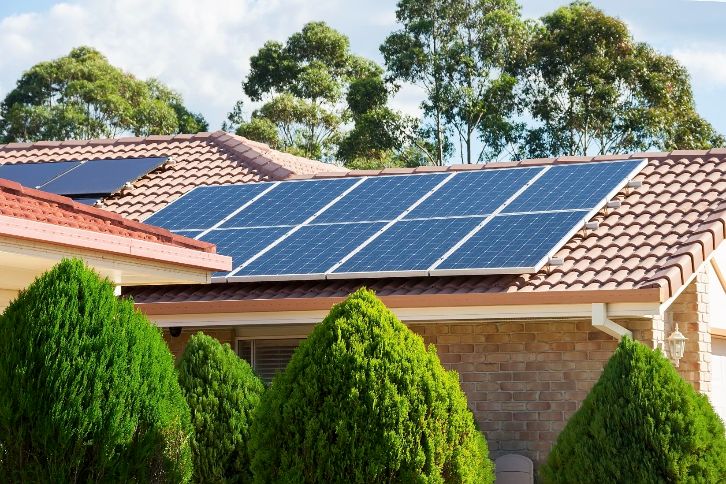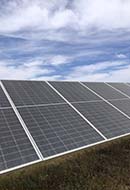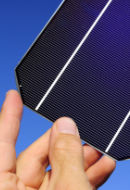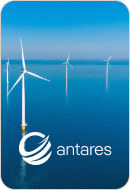How do photovoltaic solar panels work?
Photovoltaic solar panels: what they are, types of panels and how they work
Photovoltaic energy Photovoltaic self-consumption Decarbonisation
With more than a century of history, solar photovoltaics has become an exponentially growing renewable energy worldwide. According to the International Energy Agency, electricity generation capacity from renewables is expected to grow by 50% in 5 years, and more than half of this increase is due to the rise in the installation of solar photovoltaic panels. These have gone from powering the first satellites to becoming an increasingly common feature on our rooftops.

The term photovoltaic - from the Greek phos, meaning light, and voltaic, referring to the field of electricity - dates back to the mid-19th century, before the first solar cell was even manufactured. That first device had an efficiency of just 1 %, and it took decades before photovoltaic panels, devices that are capable of capturing the energy of solar radiation and transforming it into electricity for use, began to find their first applications.
Interestingly, these came hand in hand with the space race when they were used in the first artificial satellites. Vanguard 1, launched in 1958 by the United States, was the fourth satellite ever put into orbit and the first to use solar panels. As a result, it was able to continue transmitting for seven years even though its chemical batteries were depleted in just 20 days. Today, Vanguard 1 is the oldest satellite still in orbit.
Today, the growth of solar photovoltaics as a renewable energy is on an exponential curve, making it a regular, clean and cheap source of electricity. According to the International Energy Agency, electricity generation capacity from renewable energy will grow by 50 % in five years. And 60 % of that increase is attributed to an increase in the installation of solar photovoltaic panels.
What are solar panels?
Solar panels are devices that capture the energy that comes from solar radiation and transform it into electricity that can be used. It should be noted that this term is sometimes also used to refer to solar collectors, i.e., those that use solar energy thermally to produce domestic hot water. Photovoltaic panels, on the other hand, are those that generate electricity using photovoltaic solar energy.
How do solar panels work?
The photovoltaic cells in solar panels are those that have the capacity to generate electricity from the impact of solar radiation. These cells, which are usually made of crystalline silicon or gallium arsenide, are mixed with other components such as phosphorus or boron which 'dopes' and modifies the conductive properties. This creates two parts, one negatively charged, the other positively charged. When exposed to the sun, photons (light energy) move electrons (electrical energy) and a direct current is produced.
By means of an inverter, direct current is transformed into alternating current, i.e., the current that is commonly used in households.

Photovoltaic plants
Photovoltaic solar energy is obtained by converting sunlight into electricity.

Photovoltaic solar panels: what they are
Photovoltaic solar panels are key to the implementation of solar energy.

Photovoltaic cells
Discover their evolution, their types and the latest innovations.
What are the plans of a solar panel?
A solar panel is made up of several parts, the most important of which is undoubtedly the solar panel - where the photovoltaic cells are located - itself. The rest of the elements aim to protect and guarantee the functionality and durability of the solar panels. Thus, the different components would be:
 Solar panels:
Solar panels:
They are formed by the union, by means of metallic conductors, of photovoltaic cells or cells, i.e., devices capable of generating electricity when the impact of solar radiation hits them.
 Encapsulated layers:
Encapsulated layers:
They protect the solar cells and are composed of a type of polyethylene made of various compounds (ethylene and vinyl acetate) called EVA plastic. This material is a great thermal insulator while allowing the sun's rays to pass through to the photovoltaic cells.
 Structure and support frame:
Structure and support frame:
These are usually made of aluminium to ensure both lightness and durability. The frame is attached to the structure which determines variables such as the tilt and orientation of the panel to ensure that the panel is in optimum condition. In addition, the structures on which the photovoltaic panels are mounted can be fixed, mobile, ballasted or floating.
 SEE INFOGRAPHIC: How do solar photovoltaic panels work?External link, opens in new window.
SEE INFOGRAPHIC: How do solar photovoltaic panels work?External link, opens in new window.
Types of photovoltaic solar panels and their characteristics
There are three main types of solar panels:
 Monocrystalline:
Monocrystalline:
As the name suggests, these are composed of single-crystal cells. They are characterised by the fact that the silicon in the solar cells is cut into sheets, thus offering greater purity and efficiency. They are considered to be 15 to 25 % more efficient than other models. They are best recognised by their deep black colour.
 Polycrystalline:
Polycrystalline:
Easily identifiable by their dark bluish colour, polycrystalline panels are obtained by melting silicon and pouring it into moulds. Their price is lower, but so is their efficiency, although good progress has now been made in reducing their reflective losses and improving their light harvesting.
 Thin film:
Thin film:
This is the most commonly used type of panel in housing due to its price, its homogeneous appearance and its flexibility, which allows it to adapt to all types of surfaces. They are also the least efficient, although their performance is not usually affected as much by high temperatures or shading.
What is a solar panel made of: materials and components
Solar panels are usually made of silicon or another semiconductor material essential for energy conversion. This silicon is encased within a durable metal frame and covered with a protective glass layer. When this material is exposed to photons of sunlight, it energizes the silicon and creates the electricity.
The manufacturing process combines six components to create a functioning solar panel. These parts include silicon solar cells, a glass sheet, standard 12V wire and a bus wire.
Understanding what a solar panel is made of helps to appreciate how these components work together to harness solar energy efficiently.












